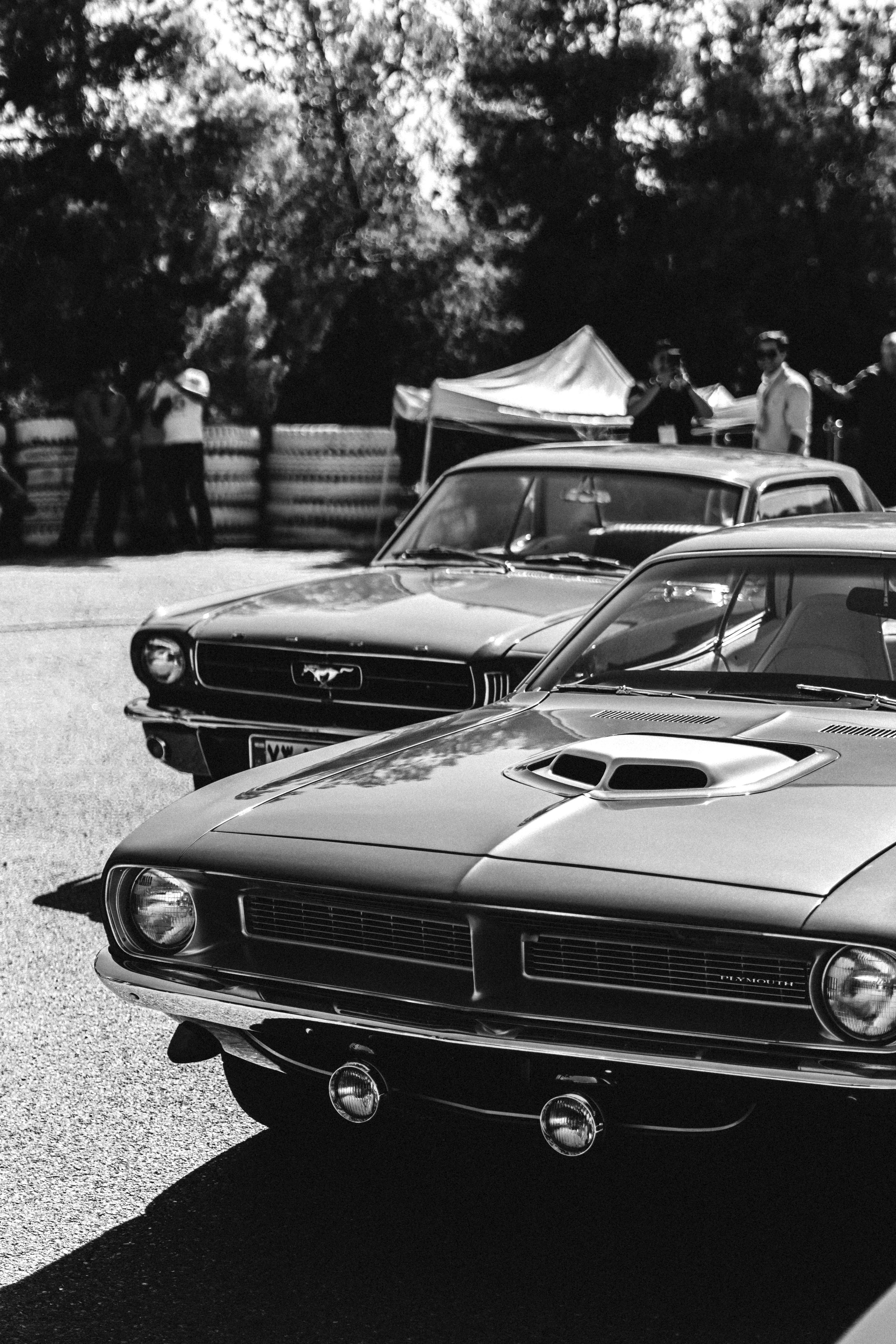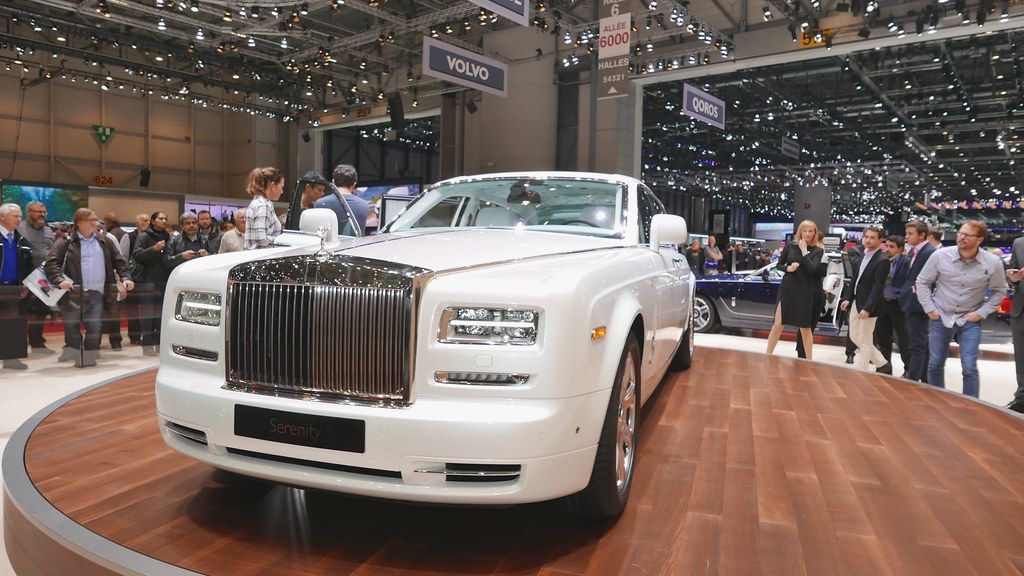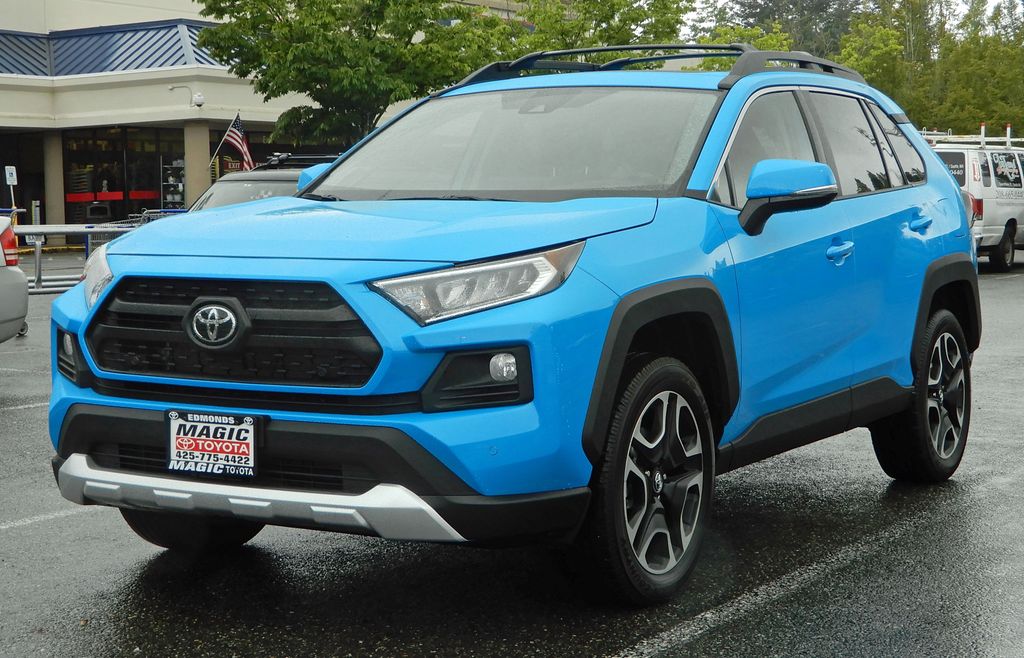
Alright, gearheads and nostalgia addicts, buckle up because we’re about to take a joyride down memory lane! It’s no secret that the streets haven’t felt quite the same since some truly legendary models vanished from showrooms. Decades might pass, but certain vehicles just stick with us, living rent-free in our conversations and daydreams. We’re talking about those coupes, muscle cars, and sporty icons that left behind gaps in the automotive world that, honestly, never really closed.
Today, we’re not just reminiscing; we’re launching a full-blown campaign to bring back some of these absolute stunners! Imagine cruising down the highway in a brand-new version of a car that defined an era. While the automotive world keeps pushing forward with high-tech features and sleek efficiency, there’s just something magical about those older models that makes enthusiasts wish they could buy them fresh off the assembly line today. Maybe it’s the roar of a classic engine, the timeless lines of vintage styling, or the sheer simplicity of driving without a million screens staring back at you.
Whatever your reason for yearning, you’re in the right place. We’ve rounded up 15 classic cars that, in our humble but enthusiastic opinion, totally deserve a second chance in the spotlight. Get ready to dive into the stories behind these unforgettable rides and picture them gracing our roads once more. These are the classic cars we wish would return, starting with some absolute game-changers that shaped the very culture of driving!
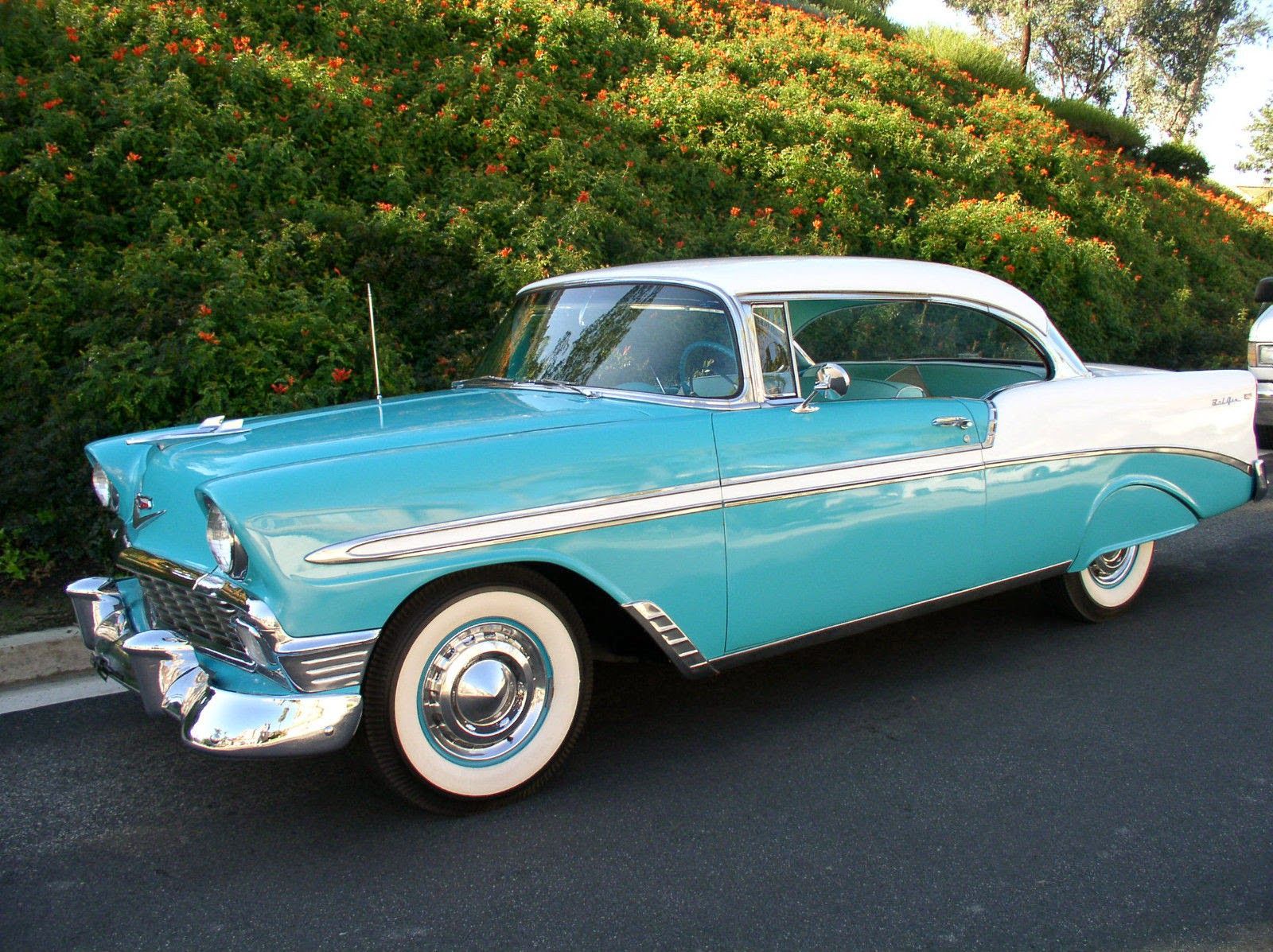
1. **Chevrolet Bel Air**Few cars managed to capture the sheer post-war optimism and excitement of America quite like the Chevrolet Bel Air. Seriously, the 1955–1957 models weren’t just cars; they defined an entire golden age of American cruising. Think iconic two-tone paint jobs, sleek lines, and the exhilarating option of V8 power. It wasn’t just a vehicle; it was a vibe.
This isn’t just a car that looks good in old photos. The Bel Air transcended being a mere status symbol to become a bona fide cultural icon. It starred in countless films, including the classic ‘American Graffiti’ from 1973, cementing its place in the hearts of generations. Its distinctive design, with those wide tailfins and chrome details, truly made it stand out in any crowd, screaming mid-century modern America.
The Bel Air was a hit with everyone, from families looking for a spacious ride to car enthusiasts craving power and style. Its blend of a smooth ride, powerful engine options, and a surprisingly roomy interior made it a top choice. The car’s combination of style and performance made it a true aspiration. Its classic lines and luxurious feel still resonate with collectors today, proving its timeless appeal. A modern revival, blending that nostalgic charm with today’s tech, would absolutely be a hit!
Car Model Information: 2025 Audi Q7 55 Premium Plus
Name: Chevrolet Bel Air
Caption: 1957 Chevrolet Bel Air convertible
Manufacturer: Chevrolet
Production: 1949–1980
ModelYears: 1950–1981
Class: Full-size
Layout: FR layout
Predecessor: Chevrolet Fleetline,Chevrolet Biscayne
Successor: Chevrolet Impala
Categories: 1950s cars, 1960s cars, 1970s cars, 1980s cars, Articles with short description
Summary: The Chevrolet Bel Air is a full-size car produced by Chevrolet for the 1950–1981 model years. Initially, only the two-door hardtops in the Chevrolet model range were designated with the Bel Air name from 1950 to 1952. With the 1953 model year, the Bel Air name was changed from a designation for a unique body shape to a premium level of trim applied across a number of body styles. The Bel Air continued with various other trim level designations, and it had gone from a mid-level trim car to a budget fleet sedan when U.S. production ceased in 1975. Production continued in Canada, for its home market only, through the 1981 model year.
Get more information about: Chevrolet Bel Air
Buying a high-performing used car >>>
Brand: Chevrolet Model: Bel Air
Price: $55,675 Mileage: 20,490 mi.
Read more about: The Enduring Allure of the AMC Javelin: Unpacking Its Worth, Speed, and Underrated Legacy for Today’s Enthusiasts
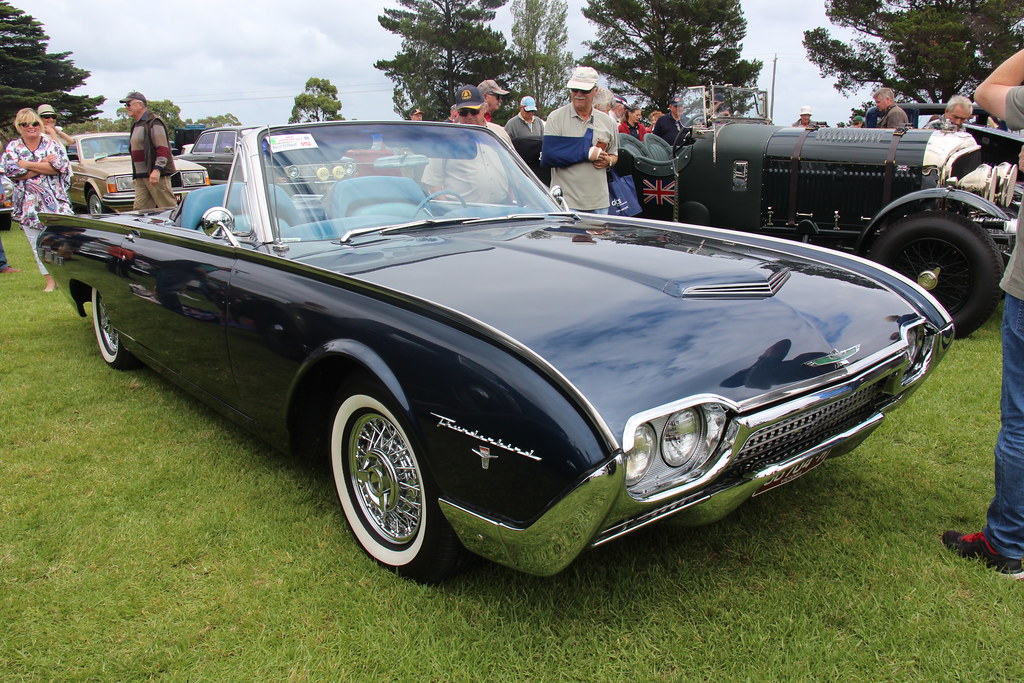
2. **Ford Thunderbird**Oh, the Ford Thunderbird! When it first rolled out, it was Ford’s elegant answer to the Chevrolet Corvette, but with its own distinct flavor. The original 1955 Thunderbird wasn’t about raw aggression; it was all about personal luxury, combining performance with an undeniable air of sophistication. Those early two-seaters? Absolute treasures that remain cherished to this day.
Over the years, the T-Bird wasn’t afraid to evolve, changing its layout and style multiple times. It even transformed into a four-seat convertible, expanding its appeal to those who wanted comfort and speed. But no matter the iteration, its sleek, stylish look, often paired with a powerful V8 engine, made it a constant favorite among car collectors. This car simply oozed class and clean cruising lines.
The Thunderbird became renowned for its smooth ride and elegant design, securing its spot in automotive history. Even with its stylistic shifts, its reputation for class and stellar performance never wavered. While the nameplate had a mixed-bag revival later on, the original spirit of the Thunderbird—a blend of retro flair and timeless performance—is what makes us dream of a truly successful, updated version today. Imagine a modern T-Bird capturing that initial magic again!
Car Model Information: 1966 Ford Thunderbird Base
Name: Ford Thunderbird
Caption: 1957 Thunderbird
Manufacturer: Ford Motor Company
Production: unbulleted list
ModelYears: unbulleted list
Class: unbulleted list
Layout: Front-engine, rear-wheel drive layout
Categories: 1960s cars, 1970s cars, 1980s cars, 1990s cars, 2000s cars
Summary: The Ford Thunderbird is a personal luxury car manufactured and marketed by Ford Motor Company for model years 1955 to 2005, with a hiatus from 1998 to 2001.
Ultimately gaining a broadly used colloquial nickname, the T-Bird, the model was introduced as a two-seat convertible, subsequently offered variously in a host of body styles including as a four-seat hardtop coupe, four-seat convertible, five-seat convertible and hardtop, four-door pillared hardtop sedan, six-passenger hardtop coupe, and five-passenger pillared coupe, before returning in its final generation, again as a two-seat convertible.
At its inception, Ford targeted the two-seat Thunderbird as an upscale model. The 1958 model year design introduced a rear seat and arguably marked the expansion of a market segment that came to be known as personal luxury cars, positioned to emphasize comfort and convenience over handling and high-speed performance.
Get more information about: Ford Thunderbird
Buying a high-performing used car >>>
Brand: Ford Model: Thunderbird
Price: $44,999 Mileage: 71,017 mi.
Read more about: The Essential 2025 Paint Color Guide for Home Sellers: Boost Your Sale Price & Attract Buyers
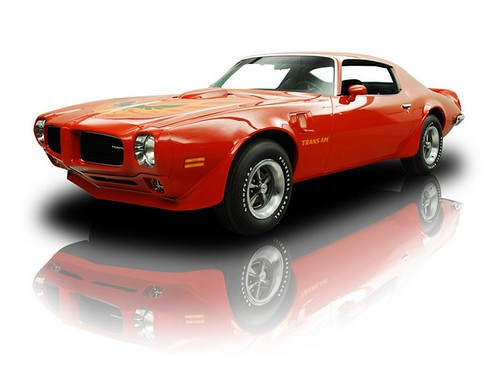
3. **Pontiac Firebird**Talk about making an entrance! When Pontiac launched the Firebird in 1967, it didn’t just join the muscle car wars; it burst onto the scene with undeniable flair. This car was a symbol of American muscle, directly challenging rivals like the Chevrolet Camaro and Ford Mustang with its aggressive styling and seriously powerful V8 engines.
Its distinct appearance, featuring a prominent front grille and sharp, commanding lines, perfectly encapsulated the fiery spirit of the muscle car era. The Firebird wasn’t just a looker; its performance was exceptional, offering a thrilling combination of speed and handling that spoke directly to a generation hungry for excitement and adrenaline. It was built for thrill-seekers, and it delivered.
And then there were the Trans Am variants of the ’70s—holy moly! The 1977 version, with its iconic T-tops and the legendary screaming chicken decal, didn’t just achieve popularity; it cemented the Firebird’s cult status forever. Seriously, who doesn’t remember that car from ‘Smokey and the Bandit’? Even though the Pontiac brand is no longer with us, the Firebird’s legacy burns bright, and fans are definitely clamoring for a modern take that honors its muscle car heritage with today’s performance tech.
Car Model Information: 1967 Pontiac Firebird LS3
Name: Pontiac Firebird
Caption: The second, third, and fourth generations of,the Pontiac Firebird Trans Am
Manufacturer: Pontiac (automobile)
Production: February 23, 1967 – August 30, 2002
ModelYears: 1967 – 2002
Class: Pony car,Muscle car
Platform: GM F platform
Related: Chevrolet Camaro
Layout: Front engine, rear-wheel-drive layout
Categories: 1970s cars, 1980s cars, 1990s cars, 2000s cars, All articles with dead external links
Summary: The Pontiac Firebird is an American automobile built and produced by Pontiac from the 1967 to 2002 model years. Designed as a pony car to compete with the Ford Mustang, it was introduced on February 23, 1967, five months after GM’s Chevrolet division’s platform-sharing Camaro. This also coincided with the release of the 1967 Mercury Cougar, Ford’s upscale, platform-sharing version of the Mustang.
The name “Firebird” was also previously used by GM for the General Motors Firebird series of concept cars in the 1950s.
Get more information about: Pontiac Firebird
Buying a high-performing used car >>>
Brand: Pontiac Model: Firebird
Price: $109,999 Mileage: 20 mi.
Read more about: Gearhead God: A High-Octane Tour Through John Cena’s Legendary American Muscle Car Empire
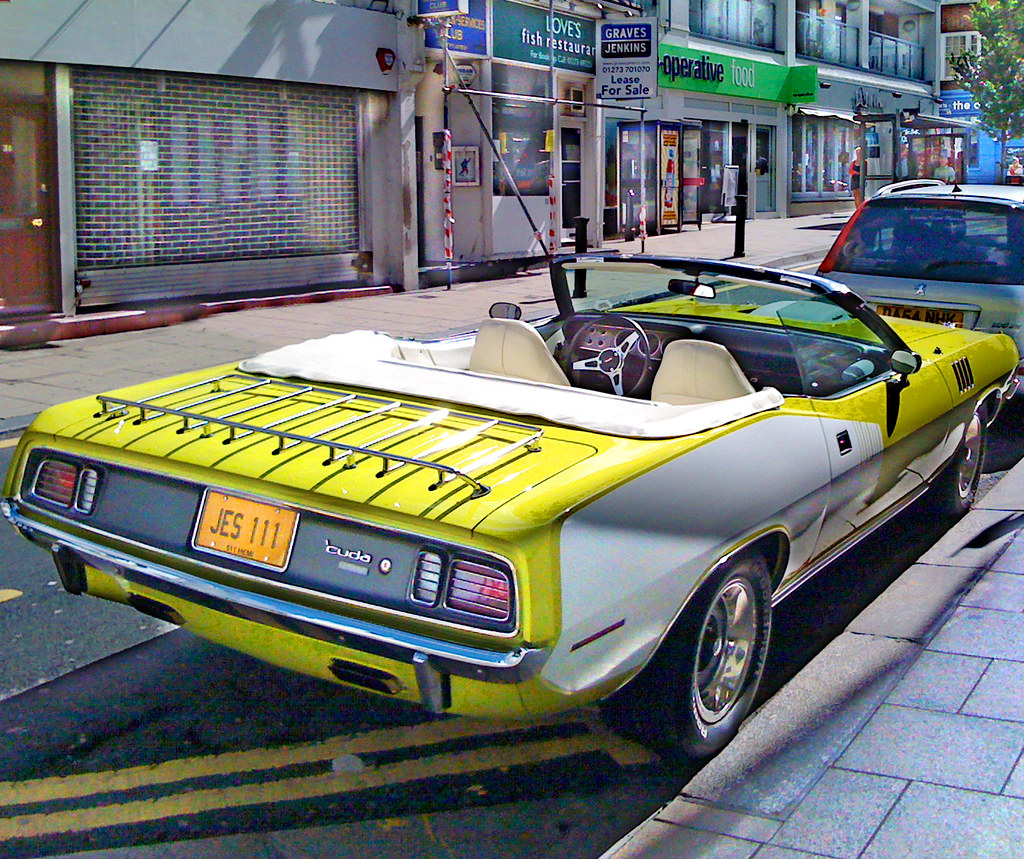
4. **Plymouth Barracuda**Before the Mustang swooped in and claimed the pony car crown, the Plymouth Barracuda was already making waves, hitting the scene in 1964. It was a true pioneer in the pony car segment, offering a fresh, unique option for performance car lovers. That fastback glass was radical for its time, but the Barracuda really hit its stride and earned true muscle car respect by 1970.
The first-generation Barracuda, with its revolutionary design, truly set the tone for the muscle car era. It boasted aggressive styling and powerful engine options, including that coveted V8. Its bold design and excellent handling made it a standout in the bustling market of the 1960s, quickly grabbing attention and solidifying its place as a formidable contender.
As the years went on, especially with the legendary ’Cuda variants, the Barracuda became synonymous with speed and raw performance. These models became absolute legends, perfectly representing Mopar’s short-lived but incredibly explosive golden era. Though the Barracuda was discontinued in 1974, its legendary status endures, making it a perennial favorite among car collectors. A revival of this classic could absolutely ignite a new generation of enthusiasts hungry for a performance car with a seriously cool history.
Car Model Information: 1969 Plymouth Barracuda ‘CUDA
Caption: 1970 Hardtop Coupe
Name: Plymouth Barracuda
Manufacturer: Plymouth (automobile)
Production: 1964–1974
Assembly: Fenton, Missouri,Hamtramck, Michigan,Maywood, California,Windsor, Ontario
Layout: Front-engine, rear-wheel drive layout
Class: Pony car
Categories: 1970s cars, All articles with dead external links, All articles with unsourced statements, Articles with dead external links from February 2018, Articles with dead external links from January 2022
Summary: The Plymouth Barracuda is a two-door pony car that was manufactured by Chrysler Corporation from 1964 through 1974 model years.
The first-generation Barracuda was based on the Chrysler A-body and was offered from 1964 until 1966. A two-door hardtop (no B-pillar) fastback design, it shared a great majority of parts and bodywork with the Plymouth Valiant, except for the distinctive wraparound rear glass.
The second-generation Barracuda, though still Valiant-based, was heavily redesigned. Built from 1967 through 1969, it was available as a two-door in fastback, notchback, and convertible versions.
The third generation, offered from 1970 until 1974, was based on the Chrysler E-body, exclusive to it, and the slightly larger Dodge Challenger. A completely new design, the two-door Barracuda was available in hardtop and convertible body styles.
Get more information about: Plymouth Barracuda
Buying a high-performing used car >>>
Brand: Plymouth Model: Barracuda
Price: $142,965 Mileage: 3,152 mi.
Read more about: Gearhead God: A High-Octane Tour Through John Cena’s Legendary American Muscle Car Empire
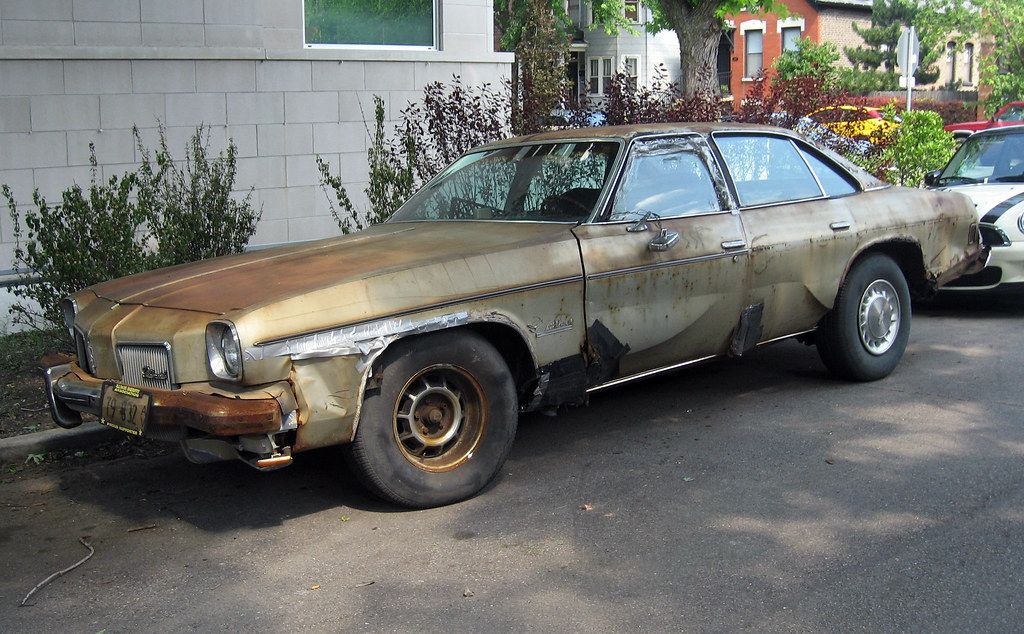
5. **Oldsmobile Cutlass Supreme**If you were around in the 1960s and 1970s, chances are you saw, or maybe even owned, an Oldsmobile Cutlass Supreme. This car wasn’t just popular; it was the top-selling car during the mid-1970s for a reason! It masterfully blended the comfort and luxury you’d expect from a full-sized car with the exhilarating performance of a muscle car, making it a beloved choice for a massive range of buyers.
The Cutlass Supreme was the epitome of a refined driving experience. It boasted smooth lines, a plush, inviting interior, and powerful V8 engines that offered plenty of grunt. Throughout its production run, it saw various design changes, yet it consistently remained a powerful symbol of American automotive excellence and versatility.
Seriously, this car was a chameleon! The Supreme’s incredible adaptability allowed it to seamlessly function as a family car, a performance machine, and a luxury cruiser, all rolled into one stylish package. Even though it shifted towards front-wheel drive and lost a bit of its muscle edge by the ’90s, fans still passionately crave those earlier rear-wheel-drive variants. Despite its discontinuation in the late 1980s, the Cutlass remains a cherished classic. A modern revival would offer the perfect blend of comfort, luxury, and performance that today’s buyers are definitely looking for.
Car Model Information: 2025 Audi Q7 55 Premium Plus
Name: Oldsmobile Cutlass Supreme
Manufacturer: Oldsmobile
Production: 1965–1997
Layout: FR layout
Successor: Oldsmobile Intrigue
Class: Personal luxury car
Caption: 1970 Oldsmobile Cutlass Supreme
Categories: 1960s cars, 1970s cars, 1980s cars, 1990s cars, All Wikipedia articles written in American English
Summary: The Oldsmobile Cutlass Supreme is a mid-size car produced by Oldsmobile between 1966 and 1997. It was positioned as a premium offering at the top of the Cutlass range. It began as a trim package, developed its own roofline, and rose during the mid-1970s to become not only the most popular Oldsmobile but the highest selling model in its class.
It was produced as a rear-wheel drive two-door hardtop, sedan, and station wagon into the 1980s, and a convertible through 1972. In 1988 Oldsmobile sought to capitalize on the brand equity of the Cutlass Supreme marque by replacing it with a downsized front-wheel drive model based on the General Motors W platform.
When production ended there was no direct replacement for the Cutlass Supreme, although the Intrigue introduced for 1998 was designed in size and price to replace all the Cutlass models.
Get more information about: Oldsmobile Cutlass Supreme
Buying a high-performing used car >>>
Brand: Oldsmobile Model: Cutlass Supreme
Price: $55,675 Mileage: 20,490 mi.
Read more about: Why Classic Car Values Are Exploding: Unpacking the Market Surge and 14 Iconic Models Skyrocketing in Price
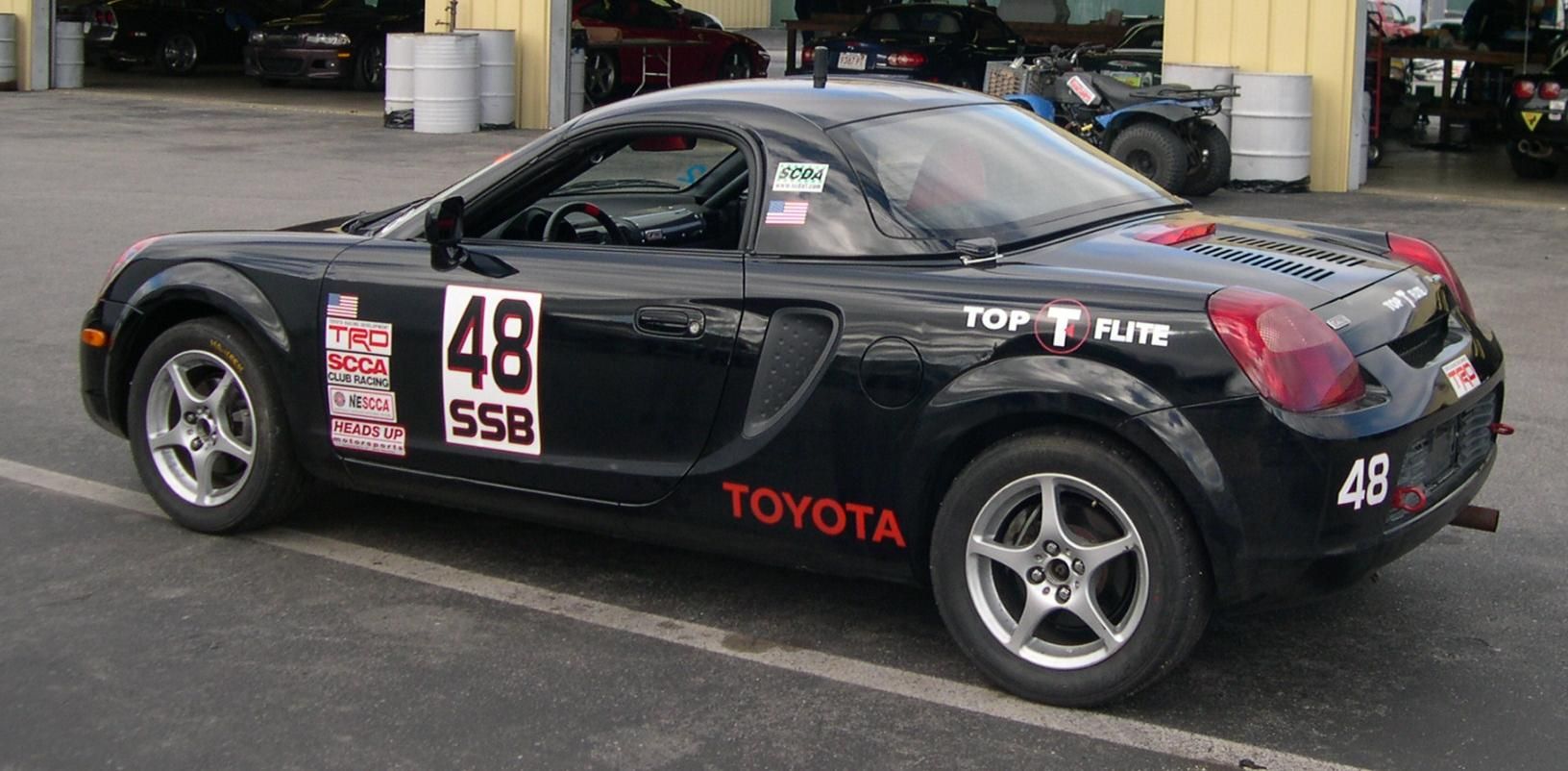
6. **Toyota MR2**Who said affordable couldn’t be exciting? The Toyota MR2 burst onto the scene in 1984, offering a mid-engine, rear-wheel-drive layout in an accessible Japanese package. This compact sports car quickly developed a devoted following, thanks to its incredibly agile handling and sleek, head-turning design. It was a revelation for enthusiasts who wanted pure driving fun without breaking the bank.
That genius mid-engine layout wasn’t just a gimmick; it provided exceptional balance, transforming every winding road into a pure joyride. The MR2’s reputation for a surprisingly affordable price tag made high-performance driving accessible to a wider audience, proving that you didn’t need a luxury budget for serious thrills. Its sharp handling, combined with a lightweight build, gave it an almost go-kart-like nimbleness on the road, creating a truly unique driving experience.
Over its three very different generations, the MR2 received several upgrades, including a supercharged first-gen and high-revving second-gen that remain perennial favorites. Despite its undeniable sporty appeal, the MR2 was, sadly, discontinued in 2007, leaving a void that fans still feel. Imagine a modern MR2, with a refined design and advanced features, rekindling that passion and attracting a whole new generation of fans!
Car Model Information: 1993 Toyota MR2 Turbo
Name: Toyota MR2
Caption: Second generation MR2
Manufacturer: Central Motors
Aka: Toyota MR (France and Belgium)
Production: 1984–2007
Assembly: Sagamihara, Kanagawa
Class: Sports car
Layout: Rear mid-engine, rear-wheel-drive layout
ModelYears: 1985–2007
Categories: 1990s cars, 2000s cars, All Wikipedia articles written in American English, All articles containing potentially dated statements, All articles needing additional references
Summary: The Toyota MR2 is a two-seater sports car which was manufactured and marketed by Toyota from 1984 until 2007 over three generations. It was the first Japanese rear-mid-engine, rear-wheel-drive production car and was sold around the world. The first generation (W10) was produced from 1984 to 1989, the second generation (W20) from 1989 to 1999, and the third generation (W30) from 1999 to 2007.
Conceived as a small, economical and sporty car, the MR2 features a straight-four engine, transversely mounted in front of the rear axle, four-wheel disc brakes, and fully independent coilover suspension with MacPherson struts on each wheel.
The name MR2 stands for either “mid-ship run-about 2-seater” or “mid-engine, rear-wheel-drive, 2-seater”. In French-speaking markets, the vehicle was renamed Toyota MR because the abbreviation “MR2” sounds like the profanity “merdeux” when spoken in French.
Get more information about: Toyota MR2
Buying a high-performing used car >>>
Brand: Toyota Model: MR2
Price: $21,499 Mileage: 145,631 mi.
Read more about: Engineer’s Nightmare: 14 Classic Models That Define Automotive Repair Challenges in 2025
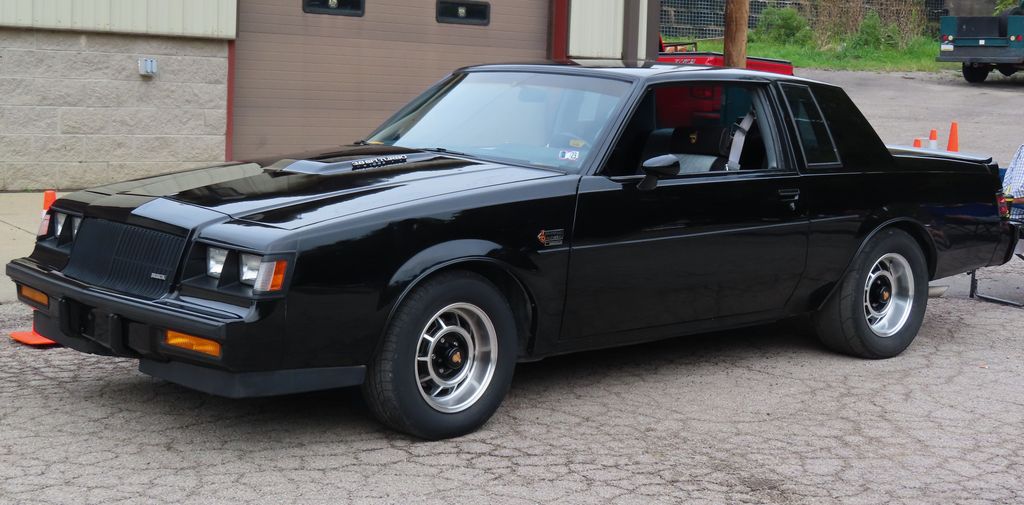
7. **Buick Grand National**Now, here’s a car that truly defied expectations! The Buick Grand National, especially the legendary 1987 GNX, was a performance car that shocked everyone, particularly considering its somewhat unassuming appearance. Picture this: a turbocharged V6 engine that delivered 276 horsepower, utterly outperforming many of its V8 muscle car competitors. It was the ultimate sleeper!
Its understated, all-black design became instantly iconic, quickly earning it a reputation as a true ‘sleeper car’ – fast and powerful, but looking deceptively like a regular sedan. The Grand National stood out as a performance outlier in a decade often remembered for excess, proving that subtlety could pack a serious punch. Enthusiasts still regard it as one of GM’s most daring and successful moves of that era.
Beyond its raw power, the Grand National was also celebrated for its precise handling and smooth ride, making it a well-rounded, surprisingly luxurious performer. Despite its resounding success and a loyal fan base, production of this magnificent machine sadly ended in 1987, leaving a huge void for enthusiasts who cherished its unique blend of power and luxury. Many believe a modern revival, packed with cutting-edge technology, would undoubtedly make the Grand National a star once again. Its loyal following would absolutely welcome its triumphant return!
Car Model Information: 2025 Audi Q7 55 Premium Plus
Name: Buick Regal
Caption: 2020 Regal Sportback
Manufacturer: General Motors
ModelYears: Unbulleted list
Sp: us
Predecessor: Buick Skylark#Second generation (1968–1972),Buick Century
Successor: Buick LaCrosse
Categories: 1980s cars, 1990s cars, 2000s cars, 2010s cars, 2020s cars
Summary: The Buick Regal is a line of mid-size cars marketed by Buick since 1973. Serving as the premium mid-size/intermediate car of the Buick product range for nearly its entire production, the Regal initially served as the divisional counterpart of the Pontiac Grand Prix and Oldsmobile Cutlass Supreme; since the late 2000s, the model line has been derived from the Opel Insignia. The Regal also serves as the basis of the high-performance Grand National, Gran Sport (GS), and Buick GNX coupes.
Through its production, the Regal has been marketed under a wide variety of body styles, including two-door coupes and four-door sedans (currently in production), along with a 5-door liftback sedan and a 5-door station wagon; the latter (the 2018-2020 Regal TourX) was the first Buick station wagon marketed since the retirement of both the Century and Roadmaster Estates after 1996. The turbocharged LD5 3.8L V6 used in the second generation was used to showcase the motorsports presence of the brand; though offered with other vehicles (including Chevrolets and Pontiacs), the turbocharged engine is most commonly associated with the Regal. During the 1990s, the V6 regained forced induction, with a supercharger replacing the turbocharger.
In 1999, General Motors commenced sales of its vehicles in China, with the Buick Regal serving as its introductory model of the joint venture SAIC-GM. After 2004, Buick retired the model line in North America, as it replaced both the Regal and the Century with the Buick LaCrosse. Following the introduction of the second-generation Regal for China for 2008, the model line returned to North America for the 2011 model year, slotted slightly below the LaCrosse. Following the introduction of the sixth-generation Regal (sourced entirely from Opel) for 2018, GM sold Opel to PSA (now Stellantis), ending sales in North America after the 2020 model year. Currently, the Insignia B-derived Regal remains in production by SAIC-GM.
Get more information about: Buick Regal
Buying a high-performing used car >>>
Brand: Buick Model: Grand National
Price: $55,675 Mileage: 20,490 mi.
Read more about: Gearhead God: A High-Octane Tour Through John Cena’s Legendary American Muscle Car Empire
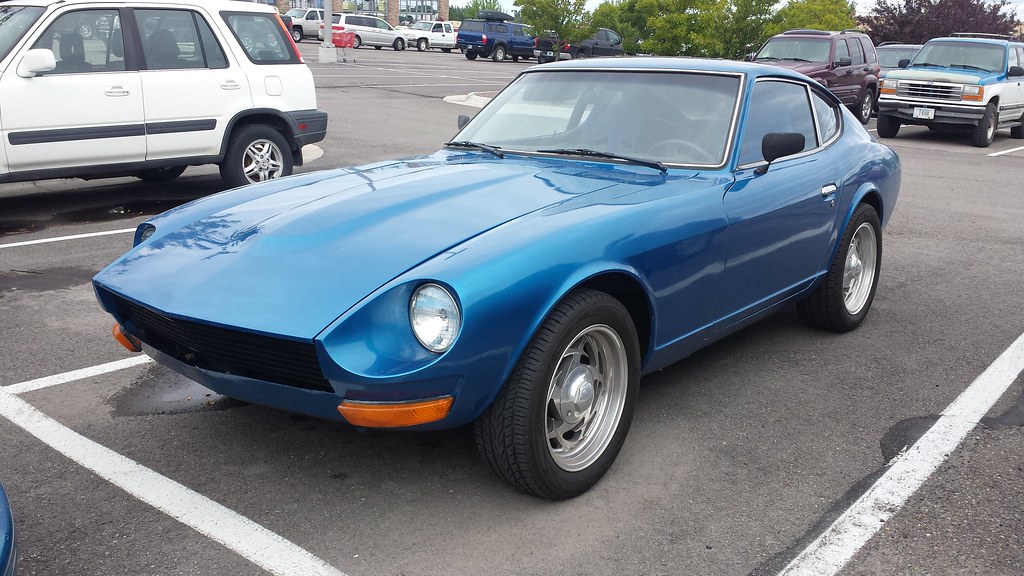
8. **Datsun 240Z**When the Datsun 240Z arrived in 1970, it wasn’t just another car; it was Japan’s brilliant answer to the British and American sports car dominance of the era. This sleek Japanese coupe offered an incredible blend of style, exhilarating performance, and, perhaps most importantly, affordability. It was a game-changer that made sports car thrills accessible to the average buyer.
Its sleek, low-slung design immediately made it a standout, turning heads wherever it went. Under the hood, a robust six-cylinder engine provided ample power for truly spirited driving, and its independent suspension gave it a sophisticated edge. The 240Z’s handling was consistently praised for its precision, making it an absolute favorite among driving enthusiasts who craved a responsive and engaging experience.
The Datsun 240Z was relatively affordable compared to its European rivals, which played a huge part in helping it gain a massive following. This car wasn’t just a hit; it laid the groundwork for the entire Z legacy and helped put Japanese automakers firmly on the map in the U.S. sports car market. After being discontinued in 1978, it quickly became a revered classic. A modern Datsun 240Z could absolutely bring back that pure, unadulterated thrill of driving to those who appreciate a well-crafted, nimble sports car with a serious heritage. We’re talking legend status, reborn!
Alright, gearheads and nostalgia addicts, we’ve already taken a glorious cruise through some absolute game-changers, but trust us, the joyride isn’t over yet! We’re diving deeper into the automotive archives to uncover more hidden gems and purebred performers that absolutely, unequivocally deserve a triumphant return. These next seven classics aren’t just cars; they’re cherished memories, design marvels, and performance powerhouses that left an unfillable void. Get ready to fall in love all over again, because these are the beloved classics we long to see back in production!
Car Model Information: 1972 Datsun 240Z
Name: Nissan Fairlady Z (Datsun 240Z, 260Z, and 280Z)
Aka: unbulleted list
Manufacturer: Nissan
Production: 1969–1978
Class: Sports car
Layout: Front-engine, rear-wheel-drive layout
Assembly: Hiratsuka, Kanagawa
BodyStyle: unbulleted list
Designer: Yoshihiko Matsuo
Predecessor: Datsun Sports
Successor: Nissan Fairlady Z (S130)
Caption: 1970–1973 Nissan Fairlady Z
Categories: 1970s cars, All Wikipedia articles written in American English, All articles with unsourced statements, Articles with short description, Articles with unsourced statements from February 2021
Summary: The Nissan S30, sold in Japan as the Nissan Fairlady Z but badged as the Datsun 240Z, 260Z, and 280Z for export, are 2-seat sports cars and 2+2 GT cars produced by Nissan from 1969 until 1978. The S30 was conceived of by Yutaka Katayama, the President of Nissan Motor Corporation U.S.A., and designed by a team led by Yoshihiko Matsuo, the head of Nissan’s Sports Car Styling Studio. It is the first car in Nissan’s Z series of sports cars.
The S30 had four-wheel independent suspension and a powerful straight-six engine with an overhead camshaft, features identified with far more expensive premium European sports cars and coupés such as the Jaguar E-Type and BMW 2800 CS, but absent from similarly priced sports cars such as the Alfa Romeo Spider, MGB and Opel GT, which had smaller four-cylinder engines and rear live axles. The S30’s styling, engineering, relatively low price, and impressive performance resonated with the public, received a positive response from both buyers and the motoring press, and immediately generated long waiting lists.
As a halo car, the S30 broadened the acceptance of Japanese carmakers beyond their image as producers of practical and reliable but prosaic and unfashionable economy cars. Datsun’s growing dealer network—compared to limited production imported sports cars manufactured by Jaguar, BMW, Porsche, Alfa Romeo, and Fiat—ensured both easy purchase and ready maintenance.
The S30 was initially sold alongside the smaller four-cylinder Datsun Sports, which was dropped from production in 1970. The S30 240Z is unrelated to the later 240SX, sold as the Silvia in Japan.
Get more information about: Nissan Fairlady Z (S30)
Buying a high-performing used car >>>
Brand: Datsun Model: 240Z
Price: $31,995 Mileage: 122,000 mi.
Read more about: Beyond the Hype: Why Savvy Celebrity Collectors Are Investing Big in Vintage Japanese Sports Cars and What It Means for Your Portfolio
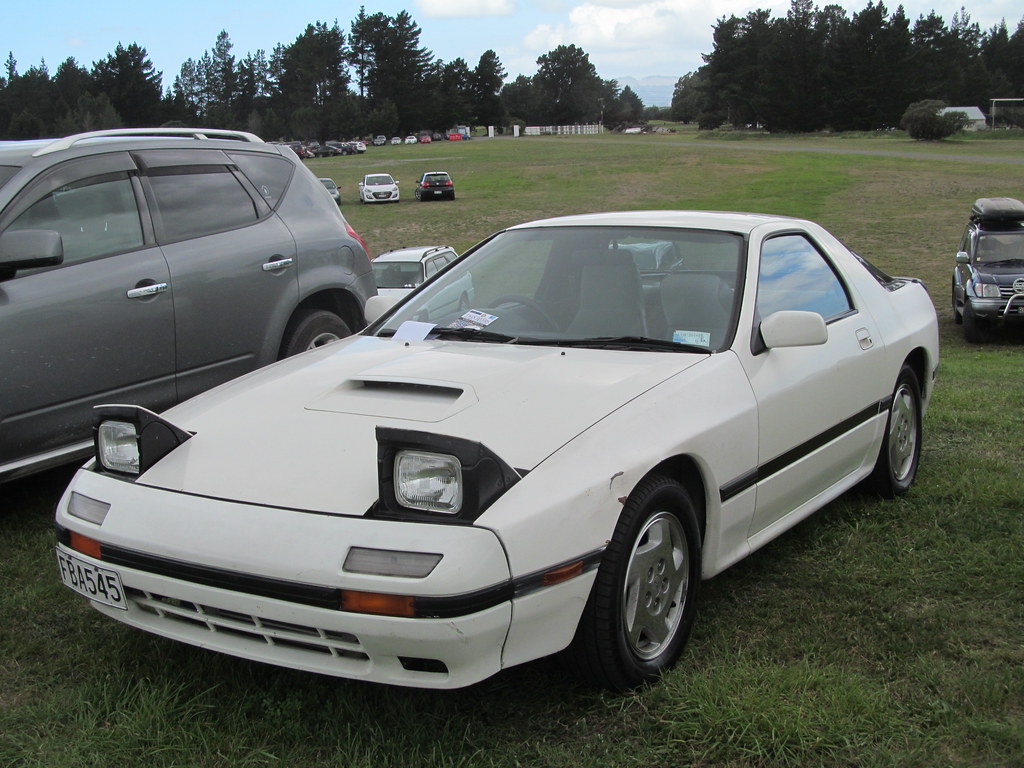
9. **Mazda RX-7**Rotary engines rarely found mainstream success, but oh my, did the Mazda RX-7 make them work! This sleek and incredibly balanced machine, especially its final FD generation from 1992–2002, wasn’t just a car; it was a tuner favorite, a legend in its own right. Its absence from modern Mazda showrooms is deeply, deeply felt by fans.
The RX-7 was all about precision and a unique driving feel, thanks to that high-revving rotary powerplant. It was lightweight, stylish, and had a chassis that truly communicated with the driver, making every corner an absolute joy. This car carved out a niche that’s still revered today.
Seriously, who wouldn’t want to see a modern interpretation of this iconic sports car? Imagine a new RX-7, blending that legendary rotary spirit with today’s advanced materials and a refined design. It would be a game-changer, reigniting a passion for unique performance that’s sorely missed.
Read more about: Beyond the Hype: Why Savvy Celebrity Collectors Are Investing Big in Vintage Japanese Sports Cars and What It Means for Your Portfolio
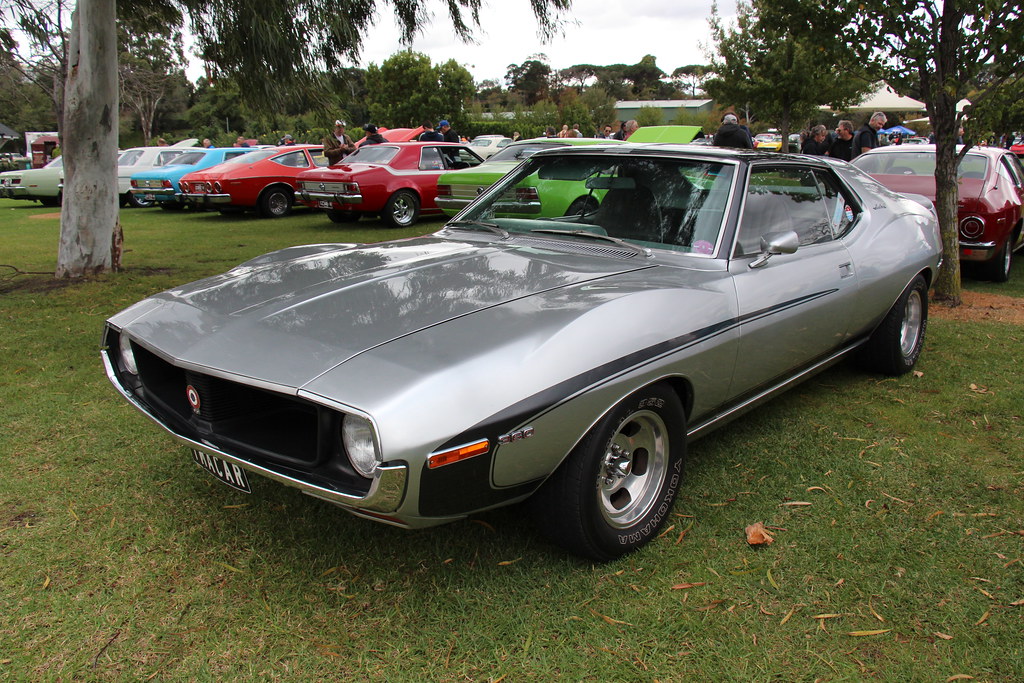
10. **AMC Javelin**Talk about a car that punched above its weight class! The AMC Javelin bravely carried AMC into the muscle car ring, and boy, did it make a statement. It wasn’t just a car; it was a bold declaration against the big three, even earning praise from racing legends like Mark Donohue.
Its distinct styling and aggressive stance perfectly captured the raw, untamed spirit of American muscle. The Javelin wasn’t just about looks; its Trans-Am championship wins are proof that this car could seriously perform, surprising those who might overlook AMC’s rich racing legacy.
We’re dreaming of a modern Javelin that could shock the automotive world once again. Picture that bold American spirit combined with today’s cutting-edge performance technology. It would be an unexpected hero, a tribute to an underdog that truly delivered.
Read more about: The Enduring Allure of the AMC Javelin: Unpacking Its Worth, Speed, and Underrated Legacy for Today’s Enthusiasts
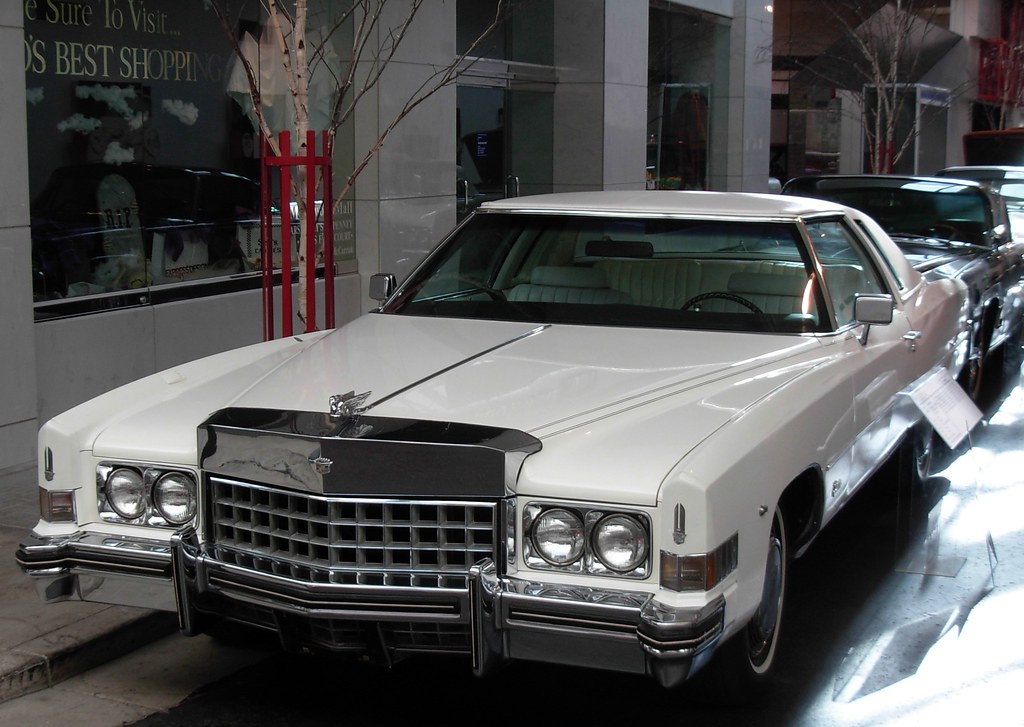
11. **Cadillac Eldorado**When you think “American luxury,” does anything come to mind quite like the Cadillac Eldorado? From its dramatic tailfins in the late ’50s to the imposing front-wheel-drive coupes of the ’70s, the Eldorado was more than just transportation; it was a rolling status symbol. It simply oozed confidence and opulence.
Its bold styling and plush ride created an undeniable presence on the road. The Eldorado wasn’t just comfortable; it was a statement of success and exquisite taste, defining personal luxury for generations of discerning drivers. Every curve and piece of chrome spoke volumes.
Enthusiasts still long for its return, and honestly, who can blame them? A modern Eldorado, blending that classic American grandeur with today’s luxurious features and a smooth, powerful ride, would be an absolute dream cruiser. Bring back that unadulterated Cadillac swagger!
Car Model Information: 1976 Cadillac Eldorado Convertible
Caption: 1963 Cadillac Eldorado Convertible
Name: Cadillac Eldorado
Manufacturer: Cadillac
Production: 1952–2002
Layout: Front-engine, rear-wheel-drive layout
Aka: Cadillac Fleetwood Eldorado
Class: Personal luxury car
Successor: Cadillac CTS
Categories: 1960s cars, 1970s cars, 1980s cars, 1990s cars, 2000s cars
Summary: The Cadillac Eldorado is a luxury car manufactured and marketed by the Cadillac Motor Car Division of General Motors from 1952 until 2002, over twelve generations.
The Eldorado was at or near the top of the Cadillac product line. The original 1953 Eldorado convertible and the Eldorado Brougham models of 1957–1960 had distinct bodyshells and were the most expensive models offered by Cadillac during those years. The Eldorado was never less than second in price after the Cadillac Series 75 limousine until 1966. Beginning in 1967, the Eldorado retained its premium position in the Cadillac price structure, but was manufactured in high volumes on a unique, two-door personal luxury car platform.
The Eldorado carried the Fleetwood designation from 1965 through 1972, and was seen as a modern revival of the pre-war Cadillac V-12 and Cadillac V-16 roadsters and convertibles.
Get more information about: Cadillac Eldorado
Buying a high-performing used car >>>
Brand: Cadillac Model: Eldorado
Price: $28,499 Mileage: 31,898 mi.
Read more about: From IRS Nightmares to Bankruptcy Battles: 14 Celebrities Who Faced Serious Financial Legal Trouble
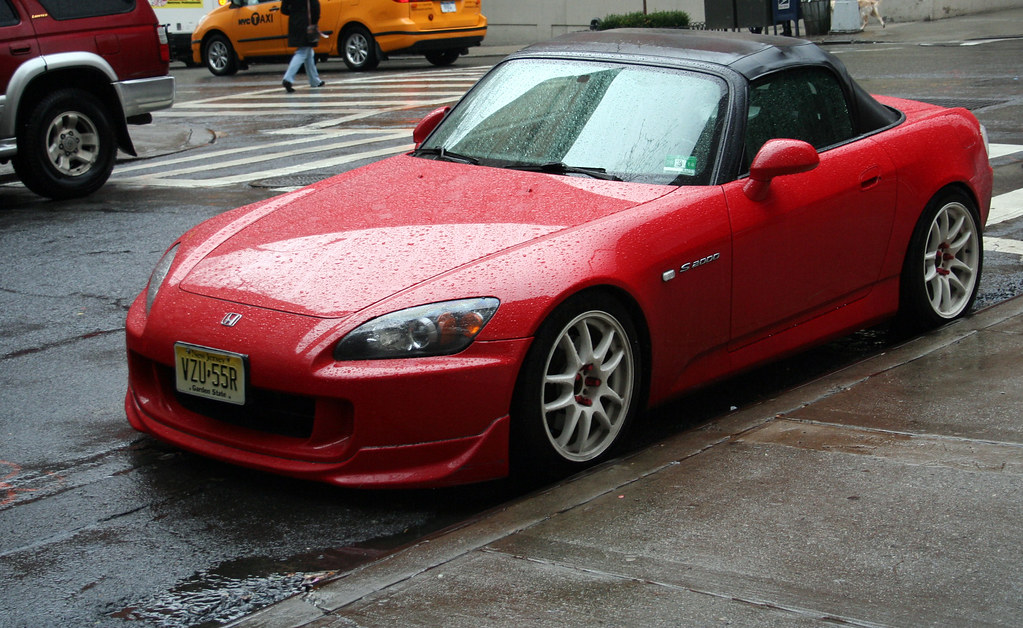
12. **Honda S2000**Pure driving enthusiasts, clear the road! The Honda S2000, launched in 1999 as a 50th-anniversary gift to Honda itself, wasn’t just a car; it was a modern legend. This lightweight, rear-wheel-drive roadster was purely driver-focused, with an engine that famously redlined at an exhilarating 9,000 RPM.
Its engineering precision and raw fun were almost unparalleled. The S2000 embodied what a true sports car should be: responsive, engaging, and thrilling on every twist and turn. It proved that sometimes less is truly more when it comes to driving enjoyment.
The discontinuation of the S2000 left a huge void, and fans have been clamoring for its return ever since. Imagine a new S2000, with that same high-revving, track-ready spirit, but with modern Honda tech and a refined design. It would be an instant classic reborn for a new generation.
Car Model Information: 2002 Honda S2000 Base
Name: Honda S2000
Manufacturer: Honda
Production: 1999–2009 (110,673 produced)
Class: Sports car
Layout: Front-engine, rear-wheel-drive layout#Front mid-engine, rear-wheel-drive layout
BodyStyle: Roadster (automobile)
Designer: Shigeru Uehara
Caption: 2005 Honda S2000 (AP2)
Predecessor: Honda S800
Categories: 2000s cars, All articles lacking reliable references, Articles lacking reliable references from May 2024, Articles with short description, CS1: unfit URL
Summary: The Honda S2000 is a front-mid engine open top sports car that was manufactured by Japanese automobile manufacturer Honda, from 1999 until 2009. First shown as a concept car called the SSM at the Tokyo Motor Show in 1995, the production version was launched on April 15, 1999, to celebrate the company’s 50th anniversary. The S2000 is named for its engine displacement of two liters, while “S” stood for “sports” carrying on in the tradition of the S500, S600, and S800 roadsters of the 1960s.
Several revisions were made throughout the car’s production life, including changes to the engine, gearbox, suspension, interior and exterior. Officially two variants exist: the initial launch model was given the chassis code AP1; though cosmetically similar, the facelifted version, known as the AP2 in North America and Japan, incorporated significant changes to the drivetrain and suspension. Production of the S2000 ceased on August 19, 2009.
The Honda S2000 was notable for its exceptional specific power output of about 92 kW (124 hp) per liter, or about two horsepower per cubic inch, the highest of any mass production, naturally aspirated car, until 2010.
Get more information about: Honda S2000
Buying a high-performing used car >>>
Brand: Honda Model: S2000
Price: $35,000 Mileage: 24,000 mi.
Read more about: Unmasking the Speed Demons: A Deep Dive into the 13 Car Models Most Often Ticketed in the U.S.
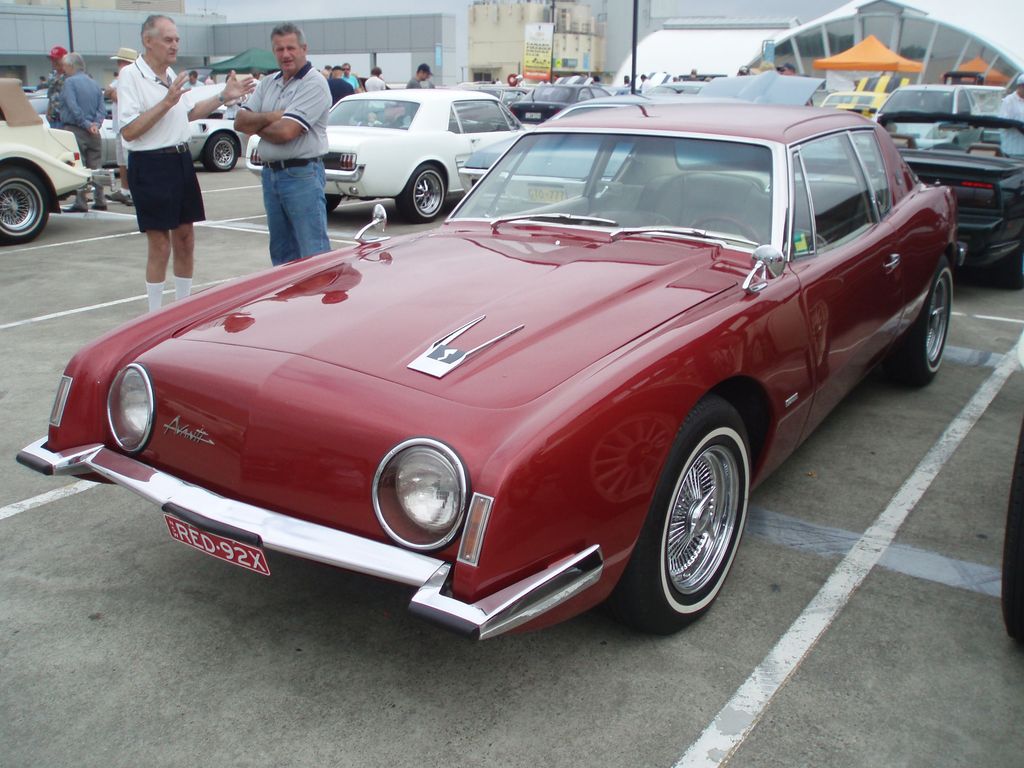
13. **Studebaker Avanti**Now, here’s a car with a story! The Studebaker Avanti, debuting in 1962, was built with a daring vision – a fiberglass body, a supercharged V8 option, and a mission to save a struggling brand. Even though Studebaker eventually folded, the Avanti’s production continued for decades under various owners, a testament to its groundbreaking design.
Its sleek, aerodynamic profile and distinctive grille-less front end were truly futuristic, making it a symbol of daring design in an era of conformity. The Avanti was quirky, yes, but undeniably cool, and a true innovator in every sense of the word.
We’d love to see a modern Avanti emerge, preserving that original spirit of bold, ahead-of-its-time design, but reimagined with contemporary materials and performance. It would be an icon for those who appreciate automotive artistry and a fearless approach to style.
Car Model Information: 1964 Studebaker Avanti
Name: Studebaker Avanti
Caption: 1963 Studebaker Avanti
Manufacturer: Studebaker
Aka: Avanti
Production: 1962: 1,200;
Assembly: Studebaker Corporation#Studebaker Factories,South Bend, Indiana
Predecessor: Studebaker Gran Turismo Hawk
Class: Personal luxury car
BodyStyle: coupe
Layout: FR layout
Engine: 289 CID
Abbr: on
Transmission: Manual transmission
Wheelbase: 109 in
Length: 192.4 in
Width: 70.3 in
Height: 53.8 in
Weight: 3095 lb
Related: Studebaker Lark
Designer: Raymond Loewy#Avanti
Categories: All articles with incomplete citations, Articles with incomplete citations from September 2018, Articles with short description, CS1 errors: missing title, Cars discontinued in 1963
Summary: The Studebaker Avanti is a personal luxury coupe manufactured and marketed by Studebaker Corporation between June 1962 and December 1963. A halo car for the maker, it was marketed as “America’s only four-passenger high-performance personal car.”
Described as “one of the more significant milestones of the postwar industry”, the Raymond Loewy-designed car offered safety features and high-speed performance. Called “the fastest production car in the world” upon its introduction, a modified Avanti reached over 170 mph (270 km/h) with its supercharged 289-cubic-inch (4,740 cm3) R3 engine at the Bonneville Salt Flats. In all, it broke 29 world speed records at the Bonneville Salt Flats.
Following Studebaker’s discontinuation of the model, a succession of five ventures manufactured and marketed derivatives of the Avanti model through 2006. These ventures licensed intellectual property and, in some cases procured parts, through arrangements with the successors to the Studebaker assets.
Get more information about: Studebaker Avanti
Buying a high-performing used car >>>
Brand: Studebaker Model: Avanti
Price: $53,000 Mileage: 45,354 mi.
Read more about: I Miss These: 15 Iconic American Car Brands That Vanished From Our Roads
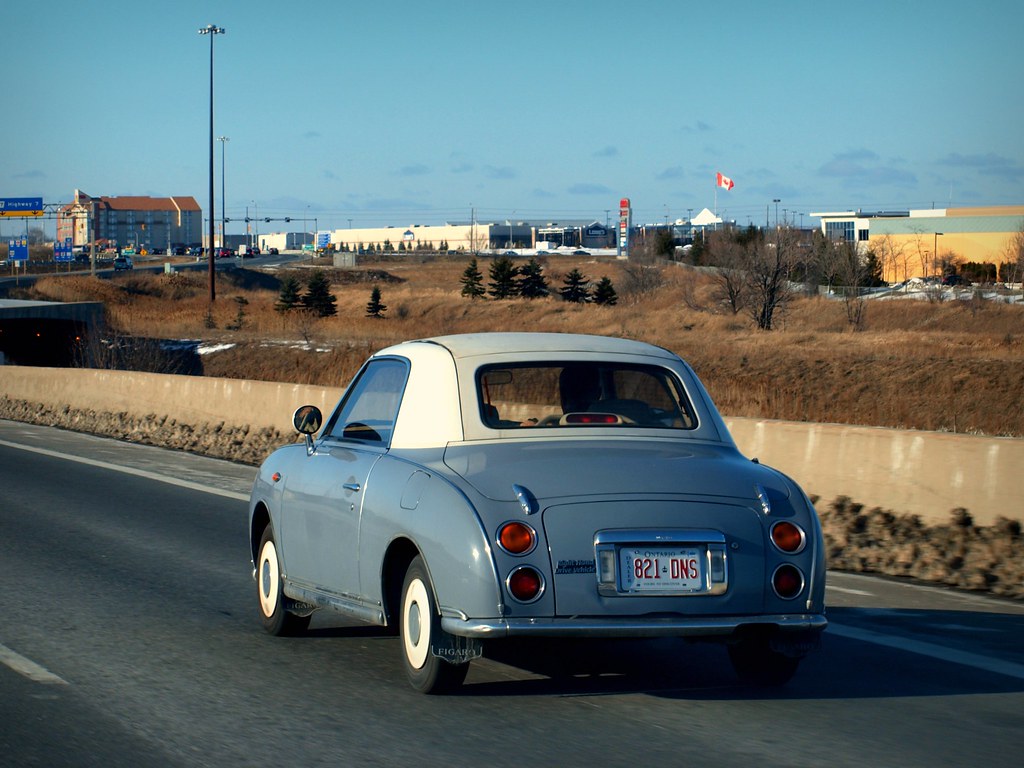
14. **Nissan Figaro**Prepare to be charmed, because the Nissan Figaro is just adorable! Sold exclusively in 1991, this delightful car instantly captivated enthusiasts with its pastel colors, chrome trim, and a wonderfully retractable roof. It looked like it drove straight out of a whimsical dream.
The Figaro’s retro design and city-friendly size made it an instant collectible, a true character on wheels. Part of Nissan’s limited-edition Pike Factory series, it wasn’t about raw power, but about pure, unadulterated joy and making a stylish statement everywhere it went.
A modern Figaro, retaining that charming retro flair but infused with contemporary reliability and perhaps an efficient electric powertrain, would be an absolute sensation. Imagine cruising in one of these, bringing smiles to everyone you pass. It’s time for this quirky classic to make a comeback!
Read more about: When Quirky Became Cool: 12 Oddball Cars That Found Cult Followings
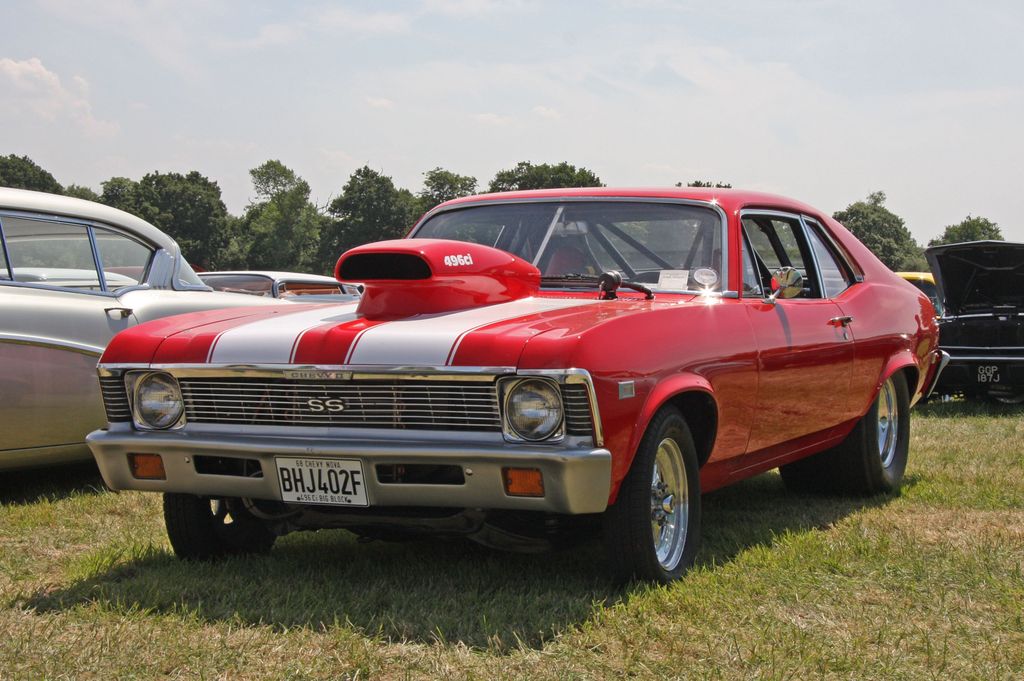
15. **Chevy Nova SS**Don’t let the “compact” label fool you for a second! The Super Sport version of the Chevy Nova wasn’t just a humble family car; it was a quarter-mile beast that absolutely dominated the streets. We’re talking about the legendary 396-powered versions of the late ’60s – these were street legends, period.
The Nova SS proved you didn’t need a full-size muscle car to make a massive impact. It packed serious heat in a deceptively small frame, delivering raw, unadulterated power that thrilled drivers and intimidated rivals. Its no-nonsense attitude was pure muscle car ethos.
A modern Nova SS, returning with that same compact muscle car spirit and a powerful engine under the hood, would be an amazing throwback. It’s a nod to pure, focused American performance that we definitely need back on our roads. Let’s bring back the legend!
Read more about: The Enduring Allure of the AMC Javelin: Unpacking Its Worth, Speed, and Underrated Legacy for Today’s Enthusiasts
And there you have it, folks! Fifteen phenomenal machines that have left an indelible mark on our automotive hearts. From roaring muscle cars to nimble sports coupes and sophisticated luxury cruisers, these aren’t just vehicles; they’re slices of history, each brimming with character and a story to tell. While the future of cars is zooming ahead with electrification and self-driving tech, there’s an undeniable magic in looking back at these icons and imagining them reborn, blending their timeless charm with today’s innovations. So, what are you waiting for, automakers? The people have spoken! It’s time to fire up those design studios and bring these legends back to life. Who knows, maybe your next dream ride is a reimagined classic, ready to hit the road and create new memories. Let’s make it happen!


